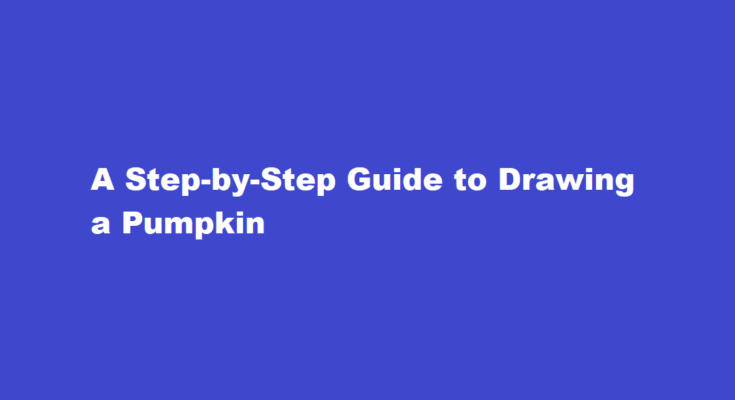Introduction
Drawing is a wonderful form of self-expression, and capturing the essence of seasonal elements can be both fun and rewarding. With fall approaching, it’s the perfect time to learn how to draw a pumpkin. Whether you’re a budding artist or just looking for a creative way to celebrate the season, this step-by-step guide will help you create a vibrant and lifelike pumpkin illustration. So, grab your drawing materials, and let’s get started on this artistic journey!
Materials You’ll Need
Before we begin, ensure you have the following materials ready
1. Drawing paper or sketchbook
2. Pencils (2B, 4B, and 6B for shading)
3. Eraser
4. Sharpener
5. Ruler (optional)
6. Blending tools (tissue paper, blending stumps)
Basic Shape
Start by drawing a simple oval shape in the center of your paper. This will serve as the base for your pumpkin. You can use a light touch with a 2B pencil for this initial sketch. Don’t worry about perfection; we’ll refine the shape later.
Adding Detail
Next, sketch the pumpkin’s ridges. Draw curved lines from the top to the bottom of the oval, creating sections. These lines should be irregular and slightly wavy to mimic the natural appearance of a pumpkin. The number and spacing of these ridges can vary depending on your desired pumpkin size and shape.
Defining the Stem
Now, draw a short, curved line at the top of the pumpkin to represent the stem. Make it slightly curved, and you can add a few small, jagged lines at the base of the stem to give it a textured look.
Refining the Shape
Use your eraser to gently remove any unnecessary lines from the initial oval shape and smooth out the pumpkin’s outline. This step helps define the pumpkin’s form and make it more visually appealing.
Shading
It’s time to add depth and dimension to your pumpkin. Start shading by using a 2B pencil to create a gradient effect. Apply light pressure near the outer edges of the pumpkin and gradually increase pressure as you move toward the center. Leave a small section near the top unshaded to give your pumpkin a glossy appearance.
Texture and Details
To make your pumpkin look more realistic, add texture and details. Use a 4B or 6B pencil to create small, curved lines within the ridges you drew earlier. These lines should follow the shape of the ridges and give your pumpkin a textured appearance.
Stem Details
Enhance the stem by adding shading and texture. Use a 4B or 6B pencil to darken the stem, paying attention to the base where it meets the pumpkin. Add some jagged lines and shading to create a woody and textured appearance.
Final Touches
Finally, review your drawing and make any necessary adjustments. Darken the shadows, refine the highlights, and ensure all the details are well-defined. You can also use blending tools to smoothen transitions between different shading areas.
FREQUENTLY ASKED QUESTIONS
What are the 21 colors of the rainbow?
3 primary colors: red, yellow, and blue. 3 secondary colors: orange, green, and violet. 6 tertiary colors: red-orange, yellow-orange, yellow-green, blue-green, blue-violet, and red-violet.
What are the 7 colors of the rainbow in order?
The colors of the rainbow are: Red, orange, yellow, green, blue, indigo, violet.
Do all rainbows have 7 colors?
ANS: Why are there only seven colors in the Rainbow? There is an infinite number of colors in a rainbow but we only see the seven colors (ROYGBIV). It comes down to the way our eyes function. Even though a rainbow has a lot of colors, the cells in our eyes only respond to three: Red, Green, and Blue.
Conclusion
Drawing a pumpkin is a delightful way to embrace the autumn season and improve your artistic skills. With practice, you can create pumpkins that vary in size, shape, and texture, adding a touch of creativity to your seasonal decorations or art collection. So, pick up your pencils and let your imagination run wild as you capture the essence of fall on paper. Happy drawing!
Read More : Evolving Gimmighoul A Journey Towards Sustainable Community Growth



